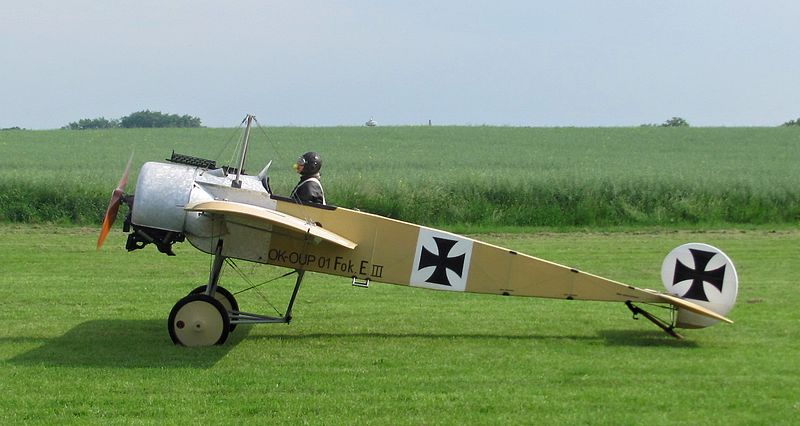
And then Boelcke’s letter continues, clearly referring to events on the same day (from same paragraph that says “on the 9th…”):
“The French were very cross with us about that; when the pair of us arrived at the front in the evening for a peaceful bit of hunting, practically all the French aircraft in the neighbourhood went for us. And suddenly those fellows really got megalomania and attacked me; among the assailants was a new type of biplane (with a cockpit and very fast). They appeared to be very astonished that we calmly let them attack us — on the contrary we were very pleased to run up against someone who didn’t bolt at once. After several futile attacks they retired, but we–being far from lazy–went after them, and each of us forced an enemy machine down in a glide.
As it was fairy late, we were satisfied with this success and flew off, side by side, in the direction of Douai [their home airfield]. But when I happened to look round, I saw two other machines circling about behind their lines. As I did not want to give our people in the trenches the impression that we were bolting, I signalled to Immelmann that we would fly round a couple of times, just to show that we were cock of the walk. But Immelmann misunderstood me and attacked one of the Frenchmen (Farman type, without a cockpit), who was not going to be drawn into a fight and so sheered off. But while Immelmann was busy with the Farman, the other Frenchman (a Morane-Saulnier Biplane) swooped down on him from behind. So then I had to turn back to help Immelmann, who could not see the second French machine. When the Morane saw me coming up, he turned round to meet me, I peppered his nose a bit, so that he got in a funk and turned back. That was his greatest mistake. I sat on his neck, and as I hung on and came up fairly close–up to fifty metres–it was not long before I hit him. I must have mortally wounded the pilot–suddenly he threw up both his hands and the machine went down vertically. I watched it fall, and saw it turn over a couple of times and crash about four hundred metres in front of our trenches. Our people ascertained that it was smashed to bits and both inmates dead.
Meanwhile it had grown fairly late and was high time for us to fly home, especially as our petrol was running out. Finally we had to land about eight hundred metres in front of our aerodrome; as the corn had already been cut, we succeeded in making good landings in spite of the growing darkness.
There was much joy in the section over my new victory. Our infantry had already rung up from the trenches to announce the crash…”
Now Immelmann’s letter of 11 September;
“The following day [which would be the 10th] I forced two enemy aircraft to land. Boelcke joined in the fight with the second one.
We signalled to each other to fly home, because it was already dusk. Suddenly I saw an enemy biplane attack Boelcke from behind. Boelcke did not seem to have seen him.
As if by agreement, we both turned round. First he came into Boelcke’s sights, then into mine, and finally we both went for him and closed up on him to within 50-80 metres. Boelcke’s gun appeared to have jammed, but I fired 300 rounds. Then I could hardly believe my eyes when I saw the enemy airman throw up both his arms. His crash helmet fell out and went down in wide circles, and a second later the machine plunged headlong into the depth from 2,200 metres. A pillar of dust showed where he hit the ground.
So then home. It was almost dark. Flares were burning when we reached our aerodrome, we could see nothing of the aerodrome itself. Suddenly my engine stopped–run out of petrol. So a forced landing. I made a smooth landing in the darkness, climbed out and looked round for Boelcke. He had been flying behind me. Nothing to be seen of him. Finally–he had he same bad luck. Ran out of petrol and made a forced landing. We were welcomed with congratulations on all sides, for everyone had watched the fight and the crash which ended it through their field-glasses.”
So:
From Immelmann’s account:
- Immelmann victory on the 9th?
- 2nd Immelmann victory on the 10th?
From Boelcke’s account:
- Just a single Boelcke victory on the 9th or 10th?
- If Immelmann did shoot down a plane on the 9th or the 10th, which one was it?
By the way, with modern text messaging, emails, and tweets, will we be able to preserve these type of accounts of what happened in combat like they did with letters?
